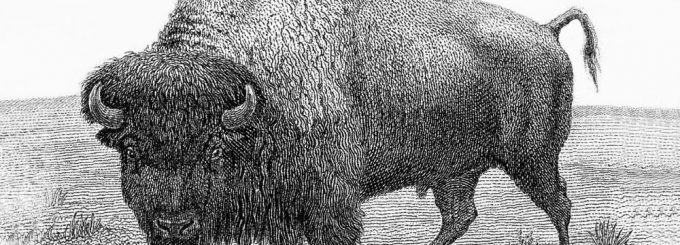Currency Spotlight: Series of 1901 $10 Legal Tender United States Bison Note

This paper bill from 1901 is regarded by many as being a fine example of U.S currency artwork. Experts estimate that currently there are only about 4,500 notes left, which makes the Series of 1901 $10 Legal Tender Bison note quite rare.
Currency Highlights
When ordered this bill will be shipped in a protective currency sleeve made from hardened plastic. It is a first issue bill that became very popular and received the full backing of the American government. Aside from the big red colored bison which is visible in the obverse side’s center, there is also a portrait of the legendary explorers Lewis & Clark who flank it. Columbia is also visible in the center on the reverse side, and many specimens still in existence have been kept in a condition which is designated as Fine-plus.
Ideally, when searching for this note you want one which is in Fine condition or better. A paper bill designated as Fine is one that will display common circulation signs, such as color fading, wrinkles, creases and perhaps a bit of staining. The bill should also manifest minimal crispness.
The $10 Bison note was issued by the American government as a form of legal tender, and though it still retains this status, its collection value is far higher than its face value, with average prices exceeding four figures. The U.S. Note has been in production for over 100 years, making it the longest operating paper note in the world. Its initial production cycle lasted from 1862 until 1971. However, once the Federal Reverse bills were introduced in 1914, they should eventually surpass the classic U.S notes by 2024.
Background
This bill was created partly to commemorate the American bison, a large bovine animal which is native to the United States. Some call it the American buffalo. It roams in herds within the grasslands of the Great Plains and historically it ranged from Alaska to as far south as Florida. Though it once existed in large numbers, it was culled during the 19thcentury as a result of slaughter and commercial hunting, and by 1889 it nearly became extinct at little more than just 541 specimens.
Thanks to recovery efforts undertaken starting in the 20th century, the species was able to recover its numbers, and by 2019 approximately 30,000 existed in the Continental U.S. It is revered by the Native Americans and plays an important part of their culture. Aside from the Bison which this note is named after, the bill also features and honors Lewis & Clark, who are most famous for their 19th century expedition which involved crossing Western North America once the Louisiana Purchase had been finalized. Meriwether Lewis along with William Clark and a group of civilian and military volunteers set out and traveled along the Missouri River, eventually crossing the Continental Divide and reaching the Columbia River. By 1906 they finally reached the Pacific Ocean, which was a major feat at the time as the nation then lacked modern transportation and this combined with the cold winters and tough terrain made travel by foot difficult.


